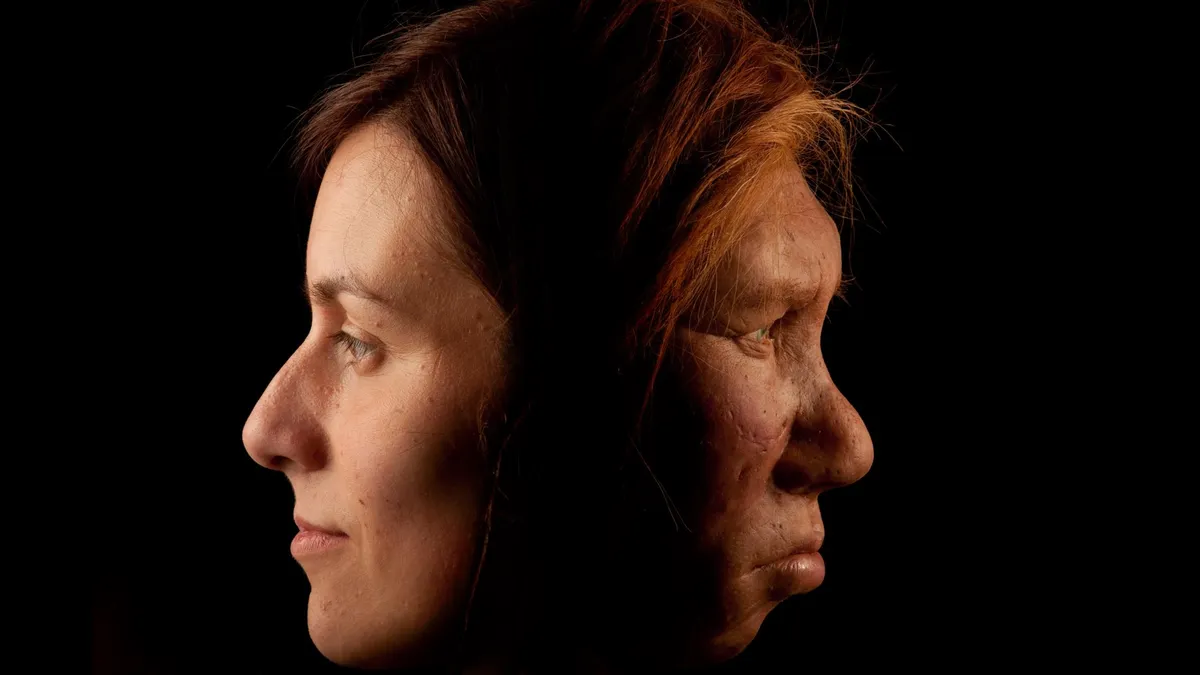
A recent study suggests that a fatal genetic incompatibility between Neanderthals and modern humans may have significantly contributed to the extinction of our ancient relatives. Researchers have uncovered that variations in a specific gene associated with red blood cell function could have led to miscarriages in Neanderthal-human hybrid women. This research highlights the complex interactions that occurred when Neanderthals and early modern humans met in Eurasia approximately 45,000 years ago, a crucial period in human evolution.
The study, led by Patrick Eppenberger, co-head of the Evolutionary Pathophysiology and Mummy Studies Group at the Institute of Evolutionary Medicine in Zurich, focuses on the PIEZO1 gene. This gene influences the function of red blood cells and is present in both modern humans (Homo sapiens) and Neanderthals. Researchers discovered that the PIEZO1 gene exhibits differences between the two species. The Neanderthal variant, resembling that found in other great apes, enabled hemoglobin in red blood cells to bind more tightly to oxygen molecules. In contrast, the modern human variant allowed for more efficient oxygen transfer to surrounding tissues.
According to the researchers, Neanderthals may have retained the original PIEZO1 variant due to its benefits in surviving extreme cold and periods of starvation. However, this adaptation posed significant reproductive risks. When maternal blood contains excessively high levels of oxygen bound to hemoglobin, it can result in low oxygen levels being delivered to a fetus via the placenta. This condition can lead to hypoxia (oxygen deficiency), restricted fetal growth, or even miscarriage.
The study highlights that the incompatibility associated with the PIEZO1 gene would arise specifically when a hybrid Neanderthal-human mother mated with a modern human father or another hybrid. Consequently, many of their offspring would not survive, leading to a decline in the transmission of Neanderthal mitochondrial DNA, which is inherited maternally. Over several generations of interbreeding between Neanderthals and modern humans, this genetic incompatibility may have severely diminished the reproductive capacity of hybrid Neanderthals.
Researchers propose that the PIEZO1 incompatibility could have accelerated the decline of the Neanderthals by gradually undermining their reproductive abilities as interactions between the two groups increased. April Nowell, a Paleolithic archaeologist at the University of Victoria, noted that this study adds a vital piece to the puzzle regarding Neanderthal extinction, particularly focusing on maternal-fetal incompatibility during pregnancy. She remarked on the irony that a gene variant that may have once aided Neanderthals became detrimental when they began interbreeding with modern humans.
John Hawks, a biological anthropologist at the University of Wisconsin, commented on the intriguing nature of the maternal-fetal incompatibility related to PIEZO1, drawing parallels to genetic blood conditions like the Rh factor incompatibility observed in modern humans. He emphasized that the PIEZO1 gene is not the sole explanation for Neanderthal extinction, as their demise resulted from a protracted and complex interaction among various archaic human groups.
Eppenberger and colleagues stressed that the effects of interbreeding between Neanderthals and modern humans were likely gradual and subtle, resembling rust weakening a structure rather than a single catastrophic event. They advocate for further research to explore how many other loci in the genome might contribute to similar hybrid incompatibilities, deepening our understanding of this significant chapter in human evolution.